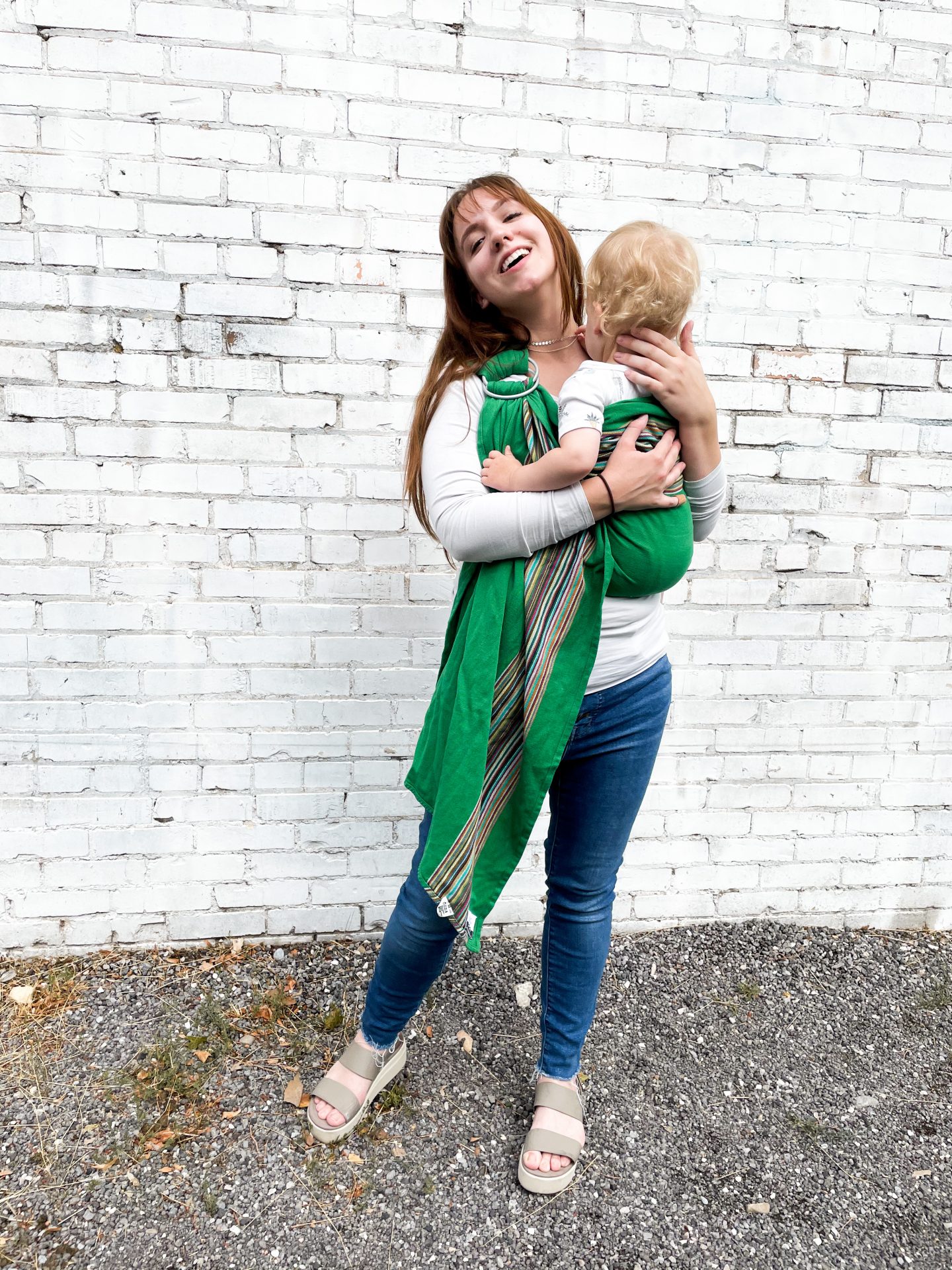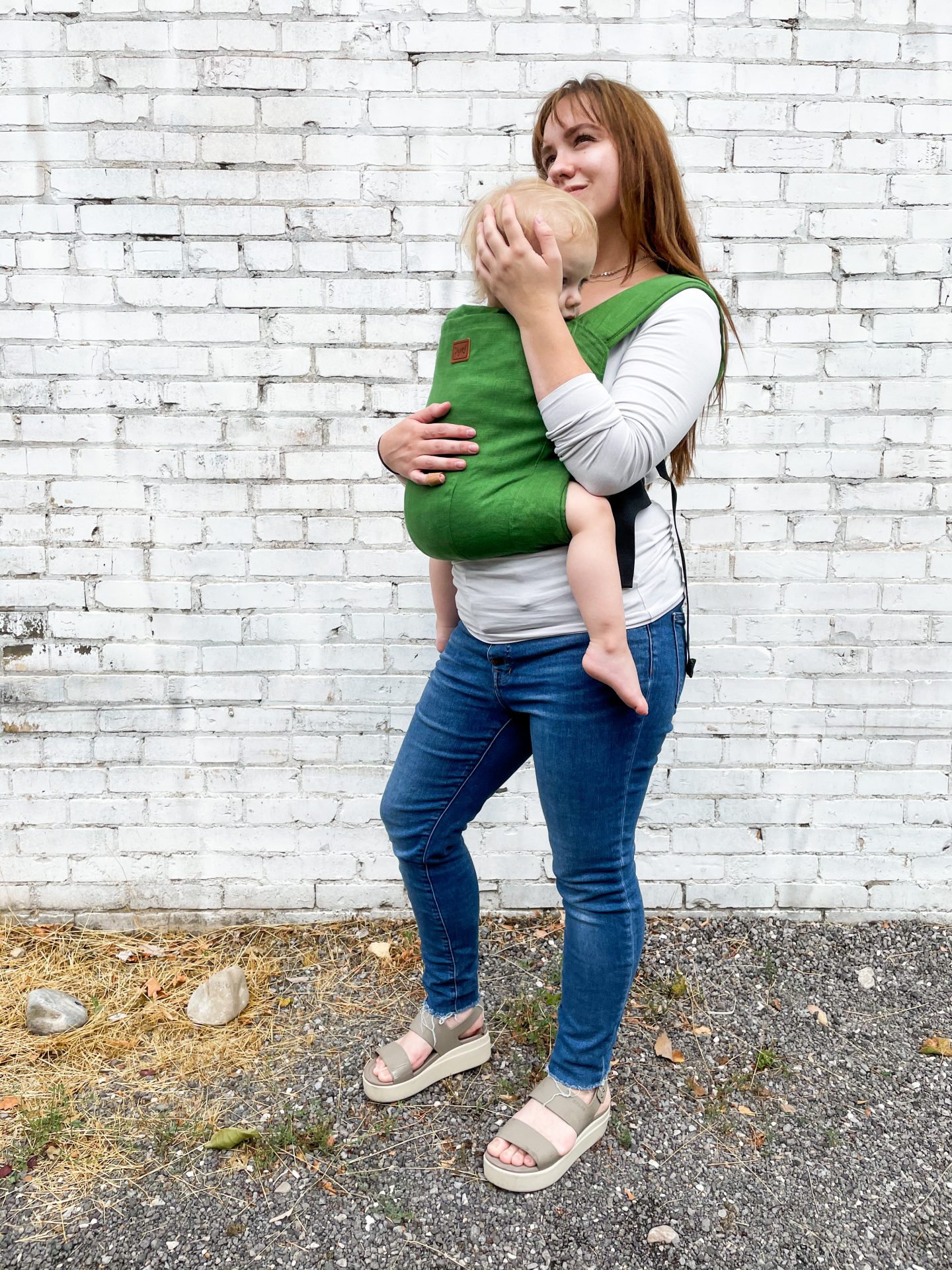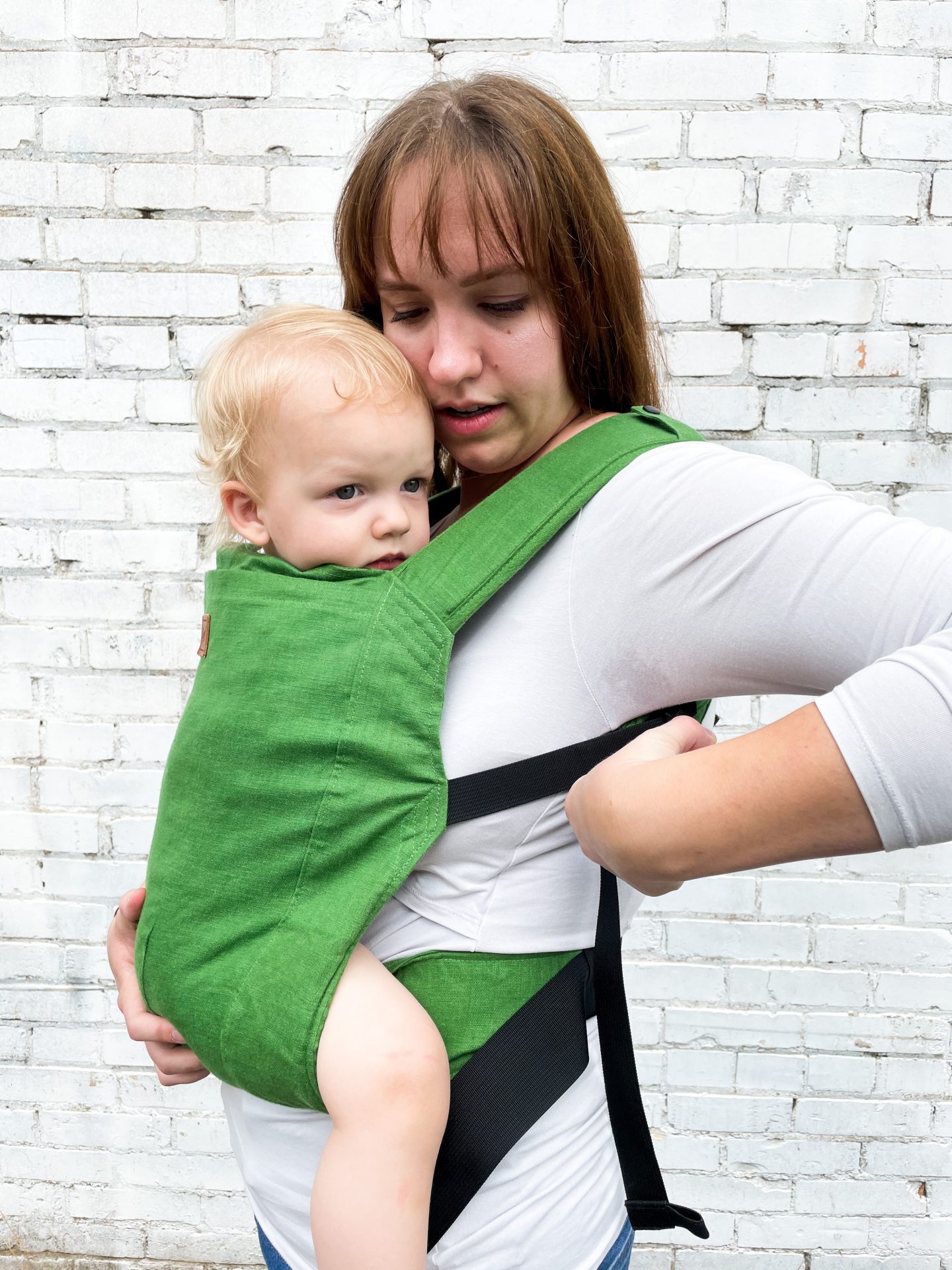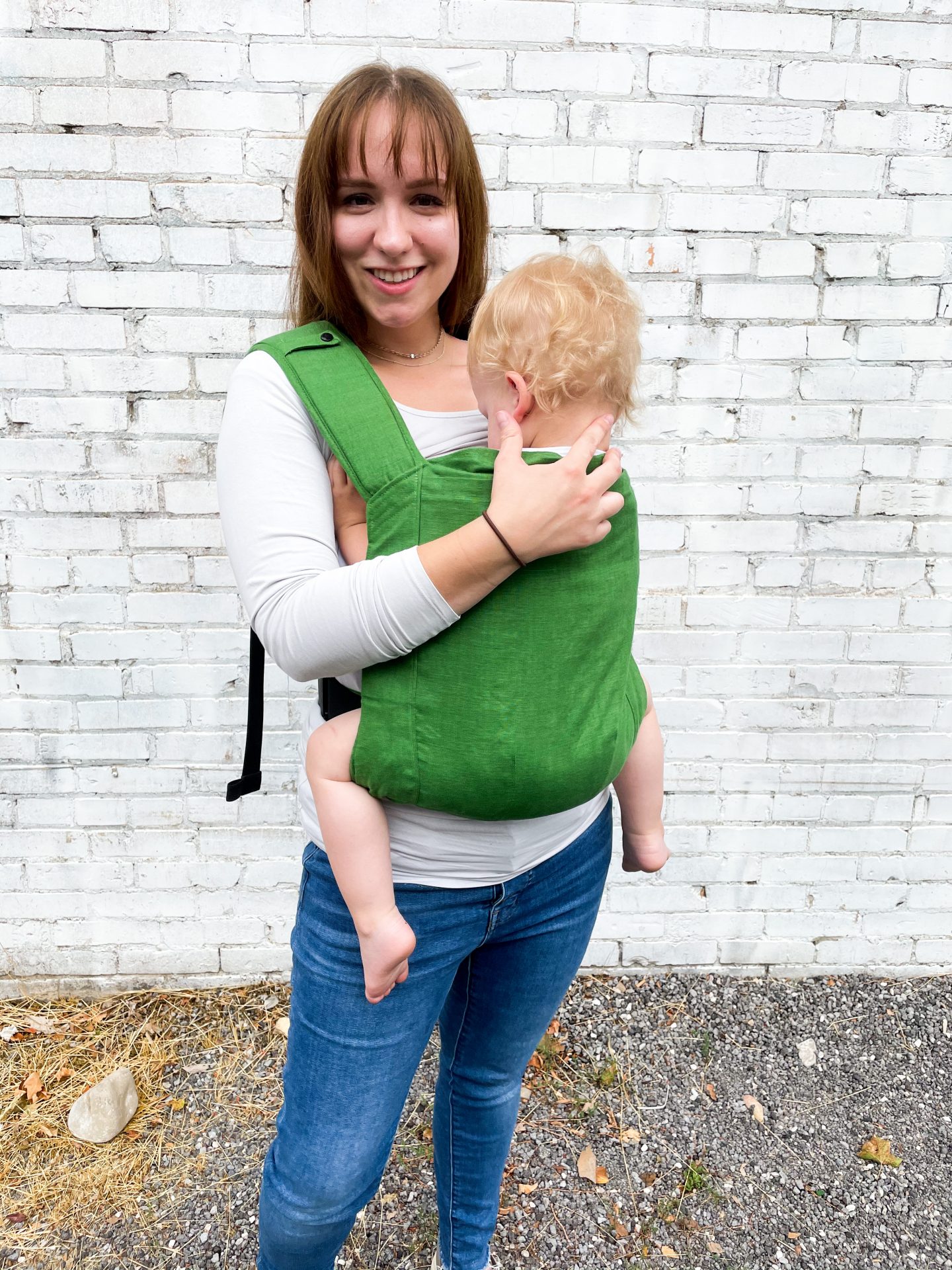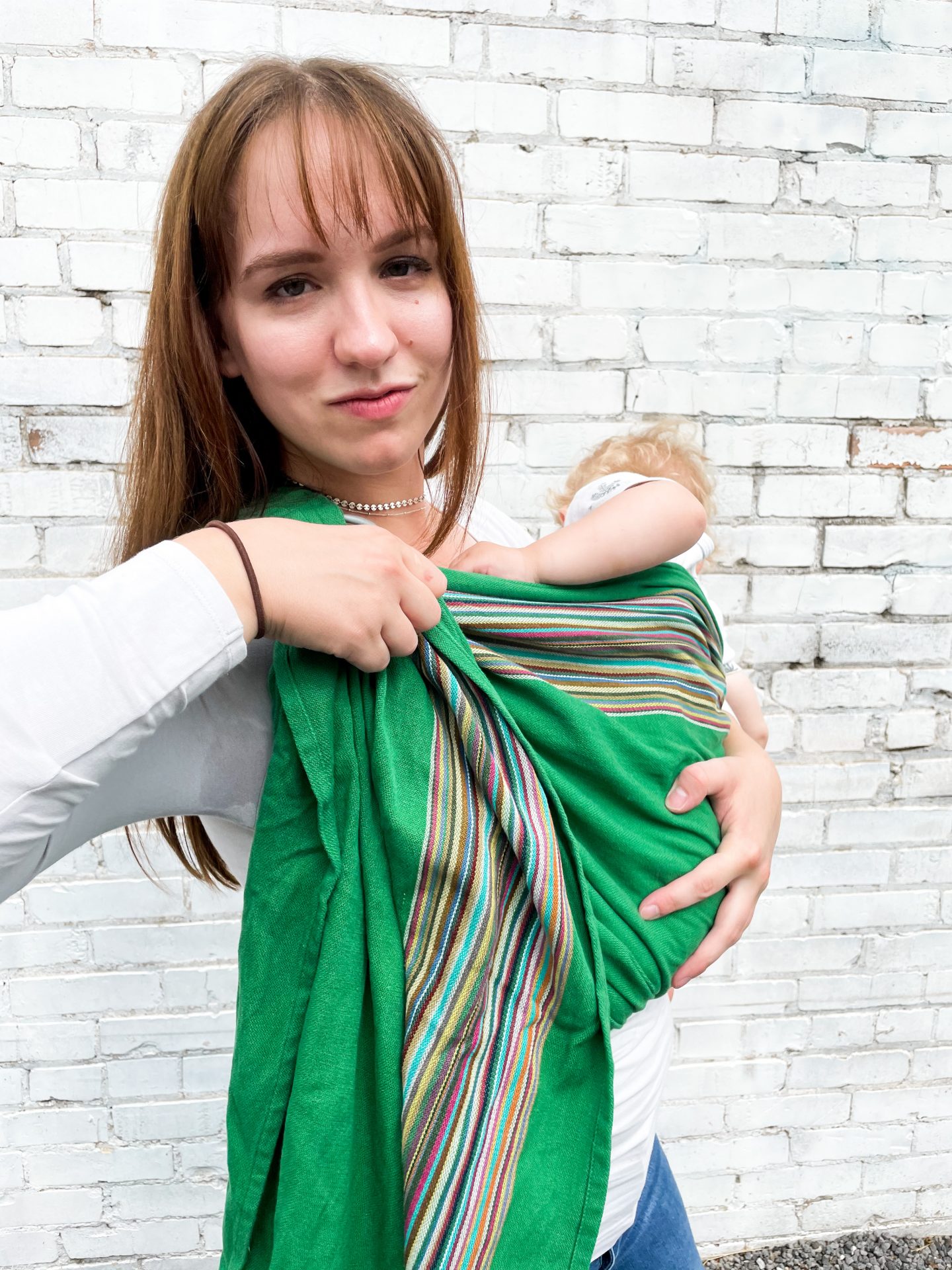One of the perks of babywearing is that it can make breastfeeding while out and about easy and discreet. To those who have yet to give it a try, however, it may seem a little daunting, or a touch tricky.
Over the years, I have successfully breastfed inconspicuously in a plethora of circumstances. I’m not comfortable enough to bare my whole chest out and about when I need to feed my baby; but my kids—like most—prefer to not be covered most of the time, and I feel a duty to normalize breastfeeding in whatever ways are comfortable for me. From nursing on mountaintops and forests; to busy walking trails; airports; and my favourite: buying glasses (and my sales associate was s h o c k e d to discovered I’d been breastfeeding once I clipped up), I’ve nursed a lot of places.
Obviously, you can absolutely bottle-feed you baby while wearing them, too. My experience is solely with breastfeeding, so most of this post will cover doing that in a subtle and comfortable way. That being said, the safety while feeding I go over is applicable to both types of feeding.
select the appropriate top – first things first, you’re going to need to wear something with easy access to the goods. What constitutes as easy to breastfeed in while babywearing can vary from person to person.
Though you could technically just lift up a regular shirt, that can be difficult with waistbands, or just having a baby strapped tightly to your torso. I’ve done this before, and having an exposed back while feeding and out in public definitely feels weird. I do not recommend it.
That leaves you with the two-shirt method (layering a regular top over a nursing cami), or a breastfeeding-specific shirt. Personally, I am firmly in camp ‘breastfeeding-specific top’, as opposed to the 2 shirt method. This is because you still have to be able to pull your top shirt up (resulting in some of the same difficulties as just wearing a regular shirt, albeit without ending up bare-backed), or down. Depending on the material of the shirt, and your chest size, this may be just fine for you. For me, it was not worth it—not when there was another option.
I am a huge fan of nursing tops. There’s a large variety out there, from built-in 2-shirt, to side zips, to wide sleeves with easy access. Though these options can be fantastic for most outings, they can still be irksome to nurse in with a carrier on, so I highly, highly, highly recommend nursing tops with a half-shirt layer.
These are my absolute favs (and, yes, they are worth the price), because the bottom layer goes c o m p l e t e l y up the entire chest, where other, similar designs aren’t as form fitting on the bottom layer, and may barely cover your chest. With Boob Design tops, and the like, you can rest assured that you will be covered on the side you aren’t feeding on, and the top layer accommodates for larger nursing breasts, and so you can cover up all but what your babe needs. It’ll also look nice, fitting nicely at or under the bust line, instead of weirdly in the middle when not feeding.

bf little gwendolyn
figure out which carriers work easiest for you – with enough dedication, you can learn to nurse in most carriers. But I’m assuming you want to figure it out sooner than later. If you really only use one carrier, then you’re going to want to work it out with that one—stick with what you’re comfortable with, and know how to use. For those with multiple carriers, you can go through the motions, and decide which seems easiest to try out and about. You can always figure out how to do it in other carriers later!
There is no right carrier to use for feeding—woven wraps, soft-structured (or buckle carriers), ring slings—it’s up to you. That being said, as a general rule, ring slings are probably to easiest to breastfeed in, given how simple they are. If you’re confident with them, I’d suggest trying those first, but don’t feel pressured to use them if you’re not.
You just need a carrier that you can lower and re-adjust back when you’re done.
implementation – to nurse while babywearing, support baby’s bum and slowly loosen the slack on your carrier. Not completely (unless you’re sitting, and are mostly using the carrier as a nursing cover)—just enough that baby can be lowered to the breast.
Then make sure the carrier is tight and secure enough to hold them while they eat. Babywearing safety rules still apply here, so you must ensure baby has adequate airflow. Since they’re in a carrier, and nursing upright, they likely won’t have quite the amount they do if you were holding them cradle-style on the couch at home, but just make sure that they have some airflow access, with no fabric covering their face.
You’re doing it! You can continue on your walk, or shopping, or whatever it is you’re up to, with no one the wiser.
It is extremely important that, when baby is done, you return them to their original position (close enough to kiss!)—even if they are cozy and sleeping. The only time babywearing poses a risk is when carriers are not used properly, and having baby low and tucked in is not appropriate.
To do this, simply support baby’s bum again (leaning back a little while doing this, if they’re asleep, can keep them dozy), and slowly re-tighten to the original positioning. Take care to tighten properly, especially if you have a sleepy limp babe, as you want to support them completely.
For babies who cannot support their own heads yet, nursing in a cradle position is the way you’ll want to go (reducing your carrier options), but it still may be best to just take them out, until they can support themselves a bit.
practice at home – if you’re still a bit intimidated with this process, it’s okay. Home, or another familiar and relaxed environment, is the best place to practice. You don’t want to give it your first try while out in a busy place with a fussy babe who is unwilling to give you the time to figure it all out. Next time you’re wearing and baby needs to eat, instead of taking them out, try breastfeeding in the carrier. Or if it’s time to nurse, but they aren’t fussy, pop the carrier on first, and see how it goes. Practice makes perfect, and you really will get better over time, so stick with it. Soon enough, it’ll become second-nature.
Good luck!


